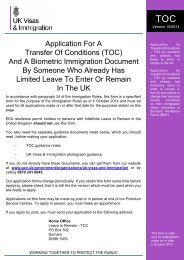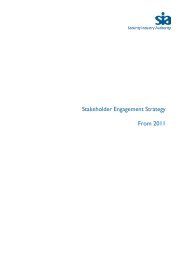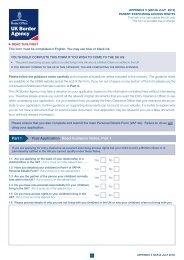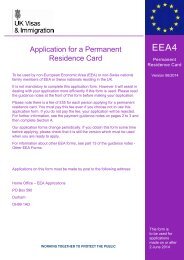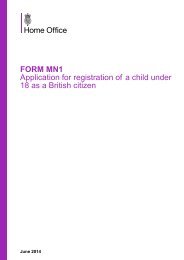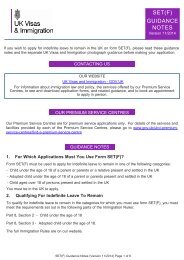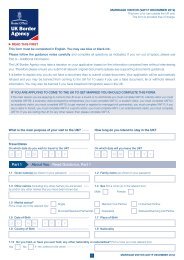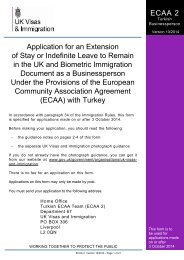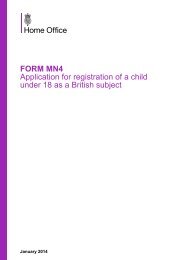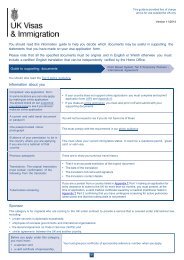ACS Assessor Guide - Security Industry Authority
ACS Assessor Guide - Security Industry Authority
ACS Assessor Guide - Security Industry Authority
Create successful ePaper yourself
Turn your PDF publications into a flip-book with our unique Google optimized e-Paper software.
<strong>ACS</strong> <strong>Assessor</strong> <strong>Guide</strong>Section 4 – Criterion Specific <strong>Guide</strong>lines: Criteria 11.4 An SIA Approved Contractor can demonstrate an effective internal and external communications strategy.1.4.1 The management of internal and external communication is handled effectively.Please refer to the Glossary in section 5, for a definition of: ApproachClarification:Communication within a smaller organisation can, by the nature of the organisation, be lessdependent on written forms and is more on verbal communication. Where communicationmethods are less formal there is a greater risk that communication may be overlooked,ineffective or that the needs of the stakeholders are assumed and not identified. The assessormust evaluate evidence to confirm this is not the case.Due to the nature of larger applicant organisations the assessor should expect a more formaland rigorous approach to communication, within the larger applicant organisations, possiblywith a department having responsibility of ensuring communication needs are met.Communication is likely to be on different levels dependant on the recipient especially wherecustomers are also based on multiple sites.The key to the <strong>ACS</strong> Standard is that communication to customers and employees is thoughtthrough in terms of identifying what type of information needs to be communicated, when itneeds to be communicated and how it is communicated to the different audiences. Thisshould be validated with employees and other stakeholders.It should not be assumed because an organisation has few employees that communication iseasily undertaken or understood.Some sectors are particularly susceptible to ‘bad’ publicity, for example Vehicle Immobilisersand Door Supervisors, although no sector is immune. Applicant organisations need to beaware of this and have given thought to how they mitigate the impact of any ‘bad’ publicity ontheir business, customers and employees.<strong>Assessor</strong>s should verify that the organisation does not make misleading claims aboutmemberships, certifications, approvals, accreditations, and/or affiliation on promotionalmaterial, including websites. Similarly claims of previous experience, history, or clientsshould be tested. Further guidance can be found on the Misuse of Trademarks Guidancenote on the assessor page.Examples could include: how communication takes place especially for mobile employees and other stakeholdersusing top down, bottom up, and horizontal communication channels. evaluating the successful of the communication i.e. are people aware. understands the different needs of stakeholders in terms of communication and howthese are addressed.Ref: ISO9001; BS7958Good practice: a dedicated ‘Gatekeeper’ keeps tabs on all external communications remote employees can access a company intranet site company extranet for customers/stakeholders chat rooms for staff company newsletters sent out with pay staff notice boards effective use of social media such as Facebook and Twitter to promotebusiness and communicate with stakeholders policy on staff use of social media to protect organisational reputation31The contents of this publication are copyright ©2013 <strong>Security</strong> <strong>Industry</strong> <strong>Authority</strong>, all rights reserved. No part of the contents may be reproduced or transmitted in any form, by any means without prior written permission of the copyright owner.



